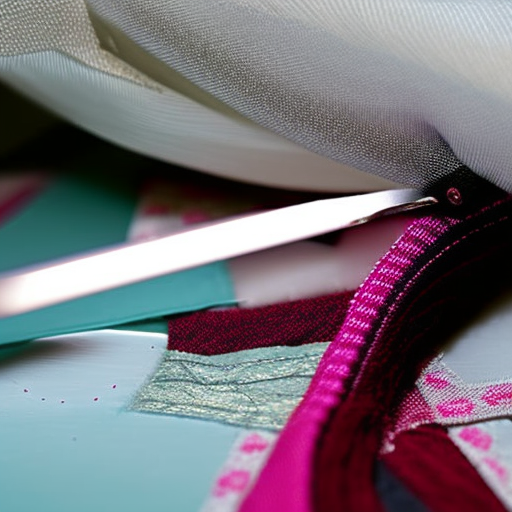Introduction
When it comes to sewing, joining pieces of fabric together is an essential skill. Whether you’re making clothing, home decor items, or accessories, using the right joining techniques will ensure strong and durable seams. In this article, we will explore some commonly used sewing joining techniques that every sewing enthusiast should know.
1. Straight Stitch
The straight stitch is the most basic joining technique. It is created by running the sewing machine in a straight line to join two fabric edges together. This stitch is commonly used for simple seams, hems, and topstitching. It is easy to learn and provides a clean finish.

2. Zigzag Stitch
The zigzag stitch is versatile and commonly used for joining fabric edges that need some stretch, like on knit or stretch fabrics. It helps prevent fraying as the thread secures the fabric edges together.

3. French Seam
A French seam is a technique used to enclose raw fabric edges inside a seam for a neat and clean finish. It is often used on delicate fabrics, such as silk or chiffon. This joining technique hides any exposed edges, preventing fraying and providing a professional look.

4. Flat-Felled Seam
A flat-felled seam is a strong and durable joining technique commonly used in denim and jean construction. It involves joining two fabric pieces by overlapping the seam allowances and stitching them down. This technique gives a finished look on both sides of the fabric and prevents fraying.

5. Seam Binding
Seam binding is a technique used to finish off raw fabric edges for a neat and professional look. It involves attaching a fabric strip or bias tape along the fabric edge using a straight stitch. Seam binding is commonly used on sheer or lightweight fabrics to prevent fraying and add stability to the seam.

Conclusion
Mastering various sewing joining techniques is crucial for achieving well-constructed and durable garments or items. Whether you’re a beginner or an experienced sewist, adding these techniques to your sewing repertoire will greatly enhance your skills and allow you to create beautiful and professional-looking projects.





Great tips!
Abby Wilson: Very helpful!
Awesome! Great information for anyone learning the basics or wanting to enhance their existing sewing skills. Kudos to the author for providing such a comprehensive list of different joining techniques!